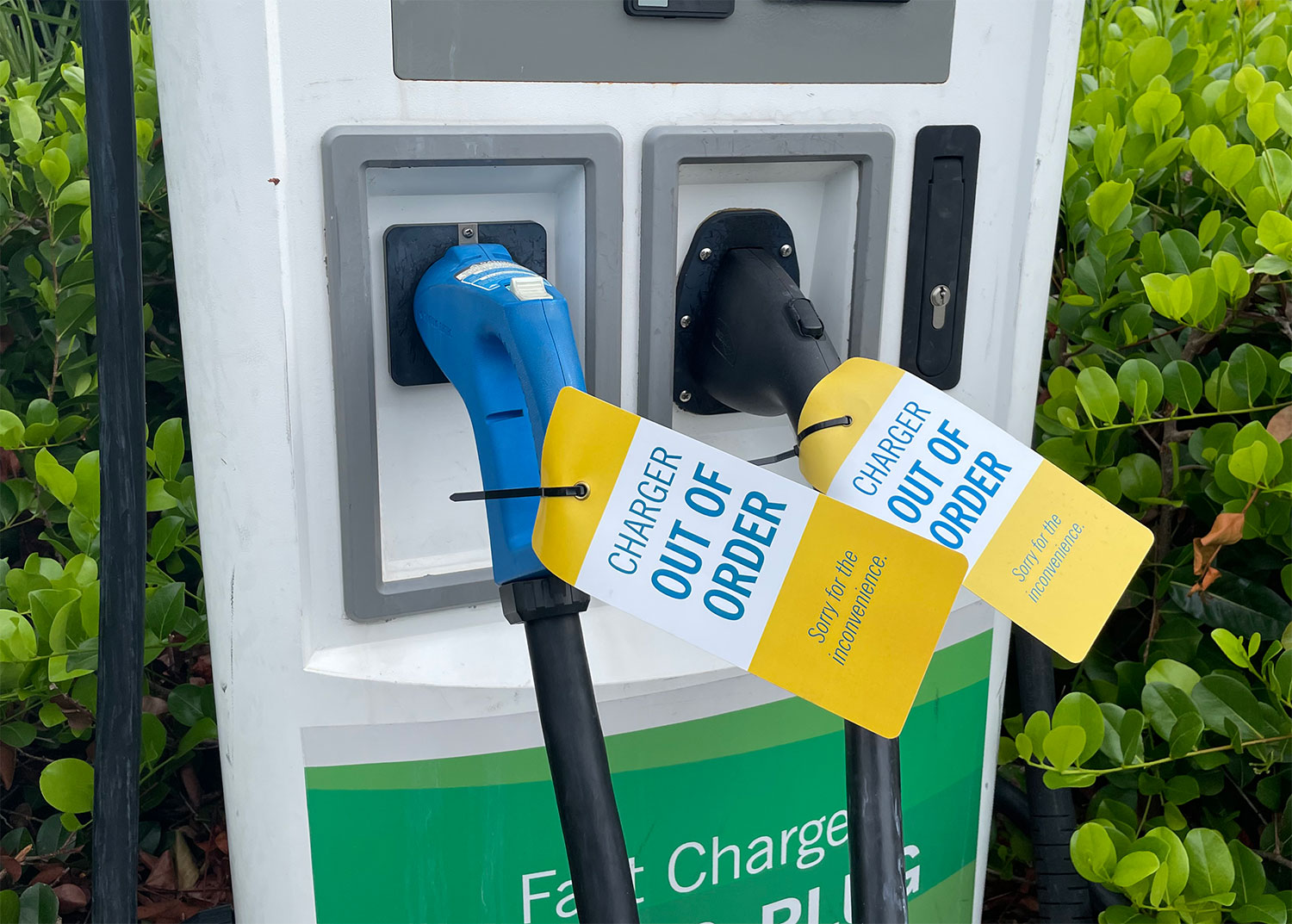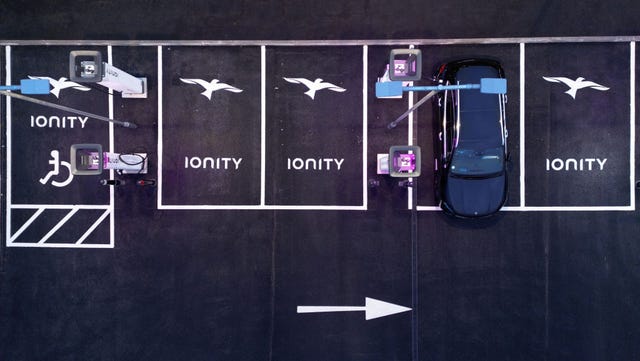The Most Reliable Sources to Buy EV Charging news and Stay Informed
The Most Reliable Sources to Buy EV Charging news and Stay Informed
Blog Article
Top EV Charging News: Trick Updates on Framework and Development

Recent Advancements in Fast-Charging Innovation

In addition, developments in battery modern technology, including enhanced thermal monitoring systems and higher power thickness batteries, complement fast-charging abilities. These growths reduce the threat of battery degradation during fast charging, ensuring durability and efficiency for EV proprietors.
Additionally, the combination of clever billing solutions is improving customer experience, enabling real-time monitoring and dynamic rates designs. EV Charging news. This flexibility enables vehicle drivers to optimize charging times and expenses based on grid demand
As car manufacturers proceed to buy fast-charging networks, the collaboration between industry stakeholders is vital. Collaborations in between billing terminal service providers and automobile makers are leading the way for considerable coverage, ultimately fostering a more robust EV community. These developments are essential in sustaining the shift to sustainable transportation.
Government Initiatives for Charging Expansion
Government initiatives play a critical role in the development of electrical lorry (EV) billing facilities, assisting in the shift to sustainable transportation. Numerous government and state programs are being carried out to improve charging ease of access, reduce the economic burden on consumers, and promote the fostering of electrical automobiles.
Significantly, the U.S. federal government has actually assigned significant financing via the Facilities Investment and Jobs Act, which sets aside $7.5 billion for EV billing network development throughout the country. This funding is targeted at releasing thousands of brand-new charging stations, specifically in underserved areas, thereby resolving range anxiety amongst potential EV customers.
Furthermore, numerous states are establishing regulations to simplify the allowing process for billing station setups, which is essential for increasing implementation. Incentives such as tax obligation credit reports and rebates for both customers and businesses are additionally being introduced to motivate the installation of charging framework.
Additionally, public-private collaborations are increasingly coming to be a focus, leveraging personal financial investment to match federal government funding. These efforts highlight a joint approach important for building a thorough and reliable EV charging network, ultimately adding to a greener and more lasting future.
Ingenious Battery Solutions Enhancing Performance
Transforming the landscape of electrical lorry (EV) technology, ingenious battery remedies are significantly enhancing effectiveness and efficiency. Breakthroughs in battery chemistry, particularly with lithium-sulfur and solid-state batteries, are resulting in boosted power thickness, which permits longer ranges and faster charging times. These new battery types have the prospective to outshine typical lithium-ion batteries by offering higher capacities while decreasing weight, therefore boosting total vehicle efficiency.
Moreover, developments in battery management systems (BMS) are optimizing energy usage and extending battery life-span. Smart formulas check battery wellness and efficiency, allowing real-time modifications to billing and releasing procedures. This not just improves the effectiveness of the battery however also ensures a more dependable and sustainable power source for EVs.
Furthermore, the integration of reusing innovations is dealing with the environmental influence of battery manufacturing and disposal. Advancements in second-life applications for EV batteries are facilitating their usage in power storage systems, adding to a round economic climate.
As these innovative battery remedies remain to develop, they assure to change the EV market, making electric lorries a lot more available and appealing to a broader target market while supporting international sustainability goals.

Collaboration Between Automakers and Charging Networks
Acknowledging the essential need for a robust charging infrastructure, automakers are increasingly collaborating with charging network companies to improve the EV ownership experience (EV Charging news). These partnerships aim to hop over to here produce a seamless charging community that benefits customers and supports the change to electric vehicles
Major automotive brand names are signing up with forces with established charging networks to increase their charging station coverage, ensuring vehicle drivers have access to trustworthy and convenient charging alternatives. Partnerships with networks like ChargePoint and Electrify America allow car manufacturers to integrate billing services straight right into their cars' navigating systems, guiding users to the local terminals and giving real-time schedule updates.
In addition, these collaborations frequently result in the advancement of fast-charging innovations that considerably lower the time required to charge an EV. By merging sources and competence, automakers and billing networks can innovate quicker, creating options that meet the growing need for electric flexibility.
In addition, joint campaigns may likewise bring about more standard charging procedures, imp source which can relieve consumer complication and advertise broader EV fostering. Overall, these calculated partnerships are pivotal in developing a easy to use and reliable charging facilities that satisfies the demands of an expanding electric automobile market.
Obstacles Facing EV Charging Facilities
As the electrical lorry market remains to grow, a number of obstacles are appearing that hinder the development of a detailed billing framework. Among the primary obstacles is the insufficient number of billing terminals, specifically in country and underserved metropolitan locations. This space develops array anxiousness amongst potential EV buyers, deterring them from making the switch.
Additionally, the lack of standardization accountable innovation complicates the facilities landscape. Variations in plug types and charging speeds can create complication for customers and raise functional intricacies for billing network drivers. The assimilation of billing terminals into existing electrical grids poses significant obstacles. Several areas deal with capacity limitations, calling for considerable investments in grid upgrades to accommodate increased need.
One more pressing concern is the high expense related to the installment and maintenance of billing terminals, which can be a barrier for both exclusive services and public entities. Governing obstacles and zoning constraints can delay the release of charging framework, impeding development in expanding necessary services. Attending to these challenges will be critical for fostering a durable EV ecosystem that supports the change to sustainable transportation.
Conclusion
In final thought, the recurring innovations in EV charging technology, supported by considerable federal government campaigns and innovative battery services, are important for the development and performance of electrical vehicle infrastructure. Collaborations between automakers and charging suppliers further enhance terminal insurance coverage, attending to the expanding need for easily accessible billing choices. In spite of difficulties that continue within the EV billing landscape, these advancements symbolize a positive trajectory towards a more sustainable and efficient electrical automobile environment.
Advancements in billing facilities have led to the development of ultra-fast battery chargers qualified of providing up to 350 kW of power, considerably decreasing charging times. Variants in plug kinds and charging speeds can develop complication for individuals and increase functional look here intricacies for charging network operators.In verdict, the continuous developments in EV charging modern technology, supported by significant federal government efforts and innovative battery solutions, are critical for the growth and efficiency of electrical automobile infrastructure. Cooperations in between automakers and billing companies further boost station insurance coverage, attending to the growing need for accessible billing options. Regardless of difficulties that linger within the EV charging landscape, these developments symbolize a positive trajectory in the direction of a more effective and lasting electric lorry community.
Report this page